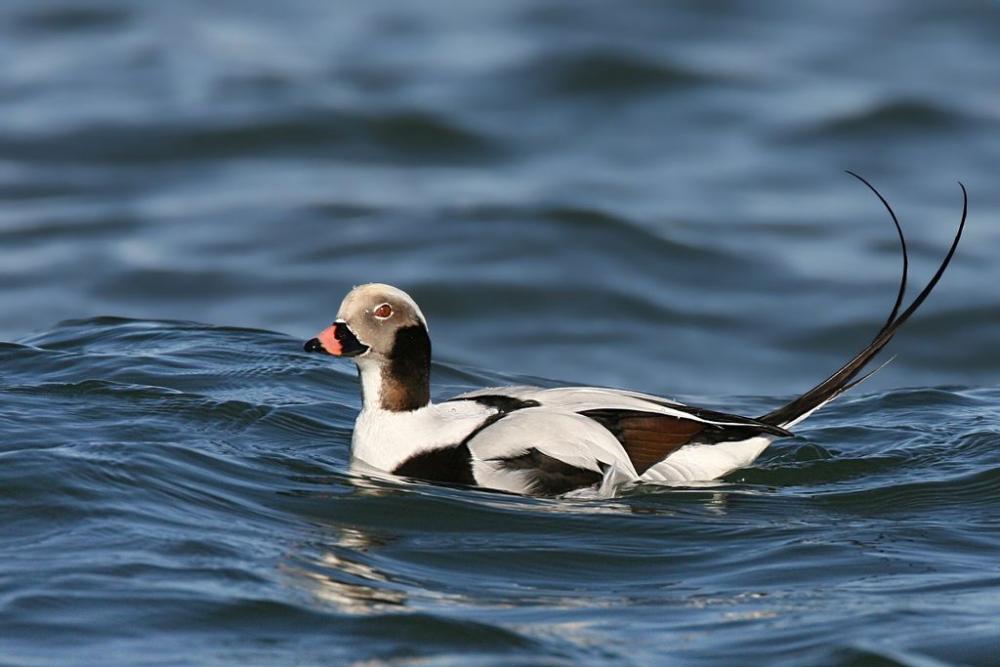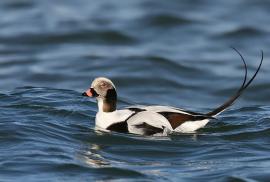Guide to Boreal Birds
Overview
The Long-tailed Duck was formerly known as the Oldsquaw. In midwinter Long-tailed Ducks begin their courtship displays. Several males gather around a single female and utter their mellow, barking, far-carrying call. Although courtship lasts until after the birds have returned to their nesting grounds, most birds are paired when they arrive in the North. In winter these diving ducks feed mainly on mollusks, shrimps, and crabs, but when nesting they switch to roots, buds, and seeds; the ducklings feed mainly on insect larvae. While most diving ducks paddle with their webbed feet, the Long-tailed Duck uses its partially folded wings to propel itself underwater. It is one of the deepest-diving ducks; birds have been caught in nets as much as 200 feet (60 meters) below the surface.
Description
Male, 19-22" (48-56 cm); female, 15-17" (38-43 cm). Male boldly patterned in black and white (mainly white in winter, mainly black in summer), with very long, slender central tail feathers. Females are duller and lack the long tail feathers. Males and females show all-dark unpatterned wings in flight.
Voice
Various clucking and growling notes; male's courtship call a musical ow-owdle-ow, ow-owdle-ow, frequently repeated.
Nesting
5-11 yellowish or cream-colored eggs in a down-lined cup of grass concealed on tundra near water.
Habitat
Breeds on tundra; winters on open bays and inshore waters.
Range/Migration
Breeds in Alaska and Arctic Canada. Winters along coasts from Bering Sea south to California, from Labrador south to Carolinas, along portions of Gulf Coast, and on Great Lakes. Also in Eurasia.



